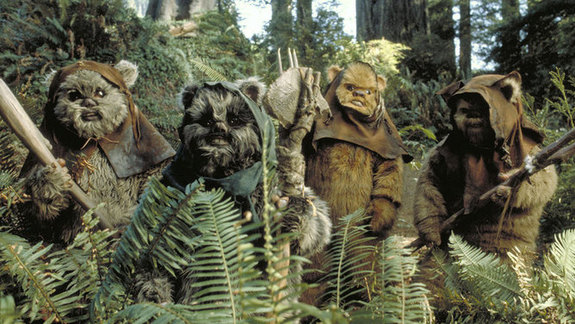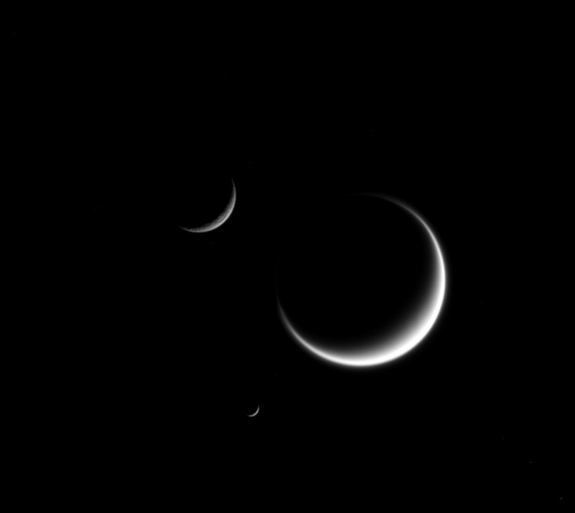
NASA scientists are using a supercomputer to aid in the hunt for moons outside of the solar system that might play host to alien life.
Credit: NASA
This article was originally published at The Conversation. The publication contributed the article to Space.com’s Expert Voices: Op-Ed & Insights.
When I was young, the only planets we knew about were the ones in our own solar system.
Astronomers presumed that many of the other stars in the night sky had planets too, but this was sheer speculation. We could never know for sure, the thinking went, because such planets were ridiculously small and faint. To ever see or study them seemed a complete impossibility. “Extrasolar planets,” or “exoplanets,” were a staple of science fiction , but not of professional astrophysics.
It’s hard to believe that there was once such a simple time. The first definitive detection of an exoplanet was in 1991, identified by the tiny wobbles experienced by the parent star as its exoplanet swung around it. Since then, the field has exploded . There are now around 1,600 confirmed exoplanets , with almost 4,000 other known candidates. There are exoplanets smaller than Mercury , and others many times bigger than Jupiter . Their orbits around their parent stars range from a few hours to hundreds of years . And the ones we know about are just a tiny fraction of the approximately 100 billion exoplanets we now believe are spread throughout our Milky Way galaxy.
But while the golden age of exoplanets has barely begun, an exciting additional chapter is also taking shape: the hunt for exomoons.
Beyond Earth-like planets to exomoons
An exomoon is a moon orbiting a planet, which in turn is orbiting another star. You may not have ever heard of exomoons before now. But if you’re a fan of films such as “Avatar,” “Return of the Jedi” or “Prometheus,” this should be familiar territory: in all three cases, most of the action takes place on an exomoon.
But what about real life? How many exomoons do we know of? At the moment, zero.

Endor: not all exomoons come with ewoks.
Credit: Star Wars: Episode VI Return of the Jedi
But the race is on to find the real-life analogs of Endor and Pandora.
You might think searching for tiny rocks orbiting distant planets around faint stars hundreds or thousands of light years away is the ultimate example of an obscure academic pursuit. But exomoons are poised to become a big deal.
The whole reason exoplanets are exciting is that they’re a path to answering one of the grandest questions of all: “Are we alone? ” As we find more and more exoplanets, we eagerly ask whether life could exist there , and whether this planet is anything like Earth . However, so far we’ve yet to find an exact match to Earth, nor can we yet really know for sure whether any exoplanet, Earth-like or otherwise, hosts life.
Enter exomoons in the search for life
There are several reasons why exomoons, these little distant worlds, may be the key to finding life elsewhere in the universe.
First, there’s the stark reality that life on Earth may not have happened at all without the starring role played by our own moon .
The Earth’s axis is tilted by 23.5 degrees relative to its motion around the sun. This tilt gives us seasons , and because this tilt is relatively small, seasons on Earth are mild: most places never get impossibly hot or unbearably cold. One thing that has been crucial for life is that this tilt has stayed the same for very long periods: for millions of years, the angle of tilt has varied by only a couple of degrees .
What has kept the Earth so steady? The gravity of our moon .
In contrast, Mars only has two tiny moons , which have negligible gravity. Without a stabilizing influence, Mars has gradually tumbled back and forth, its tilt ranging between 0 and 60 degrees over millions of years. Extreme changes in climate have resulted. Any Martian life that ever existed would have found the need to continually adapt very challenging.
Without our moon, the Earth, too, would likely have been subject to chaotic climate conditions , rather than the relative certainty of the seasons that stretches back deep into the fossil record.
The gravity of the moon also produces the Earth’s tides . Billions of years ago, the ebb and flow of the oceans produced an alternating cycle of high and low salt content on ancient rocky shores. This recurring cycle could have enabled the unique chemical processes needed to generate the first DNA-like molecules.

Moons might contribute to a planet’s habitability.
Credit: NASA/JPL-Caltech/Space Science Institute, CC BY-ND
Exomoons might have Earth-like environments
Overall, as we continue to hunt for another Earth somewhere out there, it seems likely that a twin of Earth, but without a moon accompanying it, would not look familiar. Finding exomoons is a key part of finding somewhere like here.
Meanwhile, we shouldn’t be discouraged by the fact that most exoplanets found so far are bloated gaseous beasts , with hostile environments unlikely to support life as we know it. What we don’t know yet, crucially, is whether these exoplanets have moons. This prospect is exciting, because exomoons are expected to be smaller rocky or icy bodies, possibly hosting oceans and atmospheres .
This is hardly speculation: Titan (a moon of Saturn) has a thick atmosphere even denser than Earth’s, while underground oceans are thought to exist on Enceladus (another moon of Saturn) and on Europa and Ganymede (both moons of Jupiter). Thus, if there is any other life out there somewhere, it may well not be found on a distant planet, but on a distant moon .
The hunt is on . While exomoons are too faint to see directly, astronomers are deploying ingenious indirect techniques in their searches. Those moons are assuredly out there by the billions – and soon we will find them. It won’t be too much longer before these tiny worlds help us answer huge questions.
Bryan Gaensler , Director, Dunlap Institute for Astronomy and Astrophysics, University of Toronto
This article was originally published on The Conversation . Read the original article . Follow all of the Expert Voices issues and debates — and become part of the discussion — on Facebook , Twitter and Google + . The views expressed are those of the author and do not necessarily reflect the views of the publisher. This version of the article was originally published on Space.com .

Comments are closed.